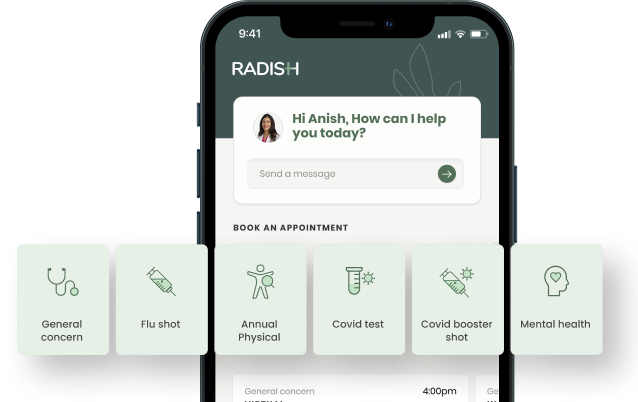Does Obesity Cause Type 2 Diabetes?

Dr. Stella Gandhi
Did you know diabetes is known as a silent killer?

Just over 11 percent of the population has diabetes, and 23 percent of U.S. adults don’t know they have it.
Knowing the risk factors for diabetes is essential as it can help you identify and take steps to manage this disease.
One of the risk factors for diabetes is obesity. “Diabesity” is a new term that experts have coined for diabetes and obesity. Experts are calling the increases in both diabetes and obesity an epidemic.
Let’s take a closer look at diabetes and obesity.
What is Type 2 Diabetes?
Type 2 diabetes is a chronic illness characterized by an inability of the body to regulate and use glucose (sugar) correctly. This type of diabetes is the most common form and is usually diagnosed in adulthood.
Before being diagnosed with type 2 diabetes, most people have pre-diabetes. Prediabetes blood sugar levels are typically high but not high enough to be diagnosed with diabetes. At this point, lifestyle changes can reverse your sugar levels and help prevent a diagnosis of diabetes.
Warning Signs of Type 2 Diabetes
It’s helpful to know the early signs of diabetes, those that occur during the pre-diabetes phase so that you can take action to prevent diabetes. Many of these, such as irritability, might not be things that you would think about with diabetes.
- Dry Mouth
- Fatigue
- Itchy Skin
- Frequent urination
- Being extremely thirsty
- Changes in vision, such as blurred vision
- Irritability
Risk Factors For Developing Diabetes
Obesity is one of the main risk factors for type 2 diabetes. That’s because obesity interferes with the transport and storage of glucose. The area of the liver where excess glucose is stored is filled with fat. There is no room for the glucose to be stored. One expert compares it to trying to put furniture in a room that is already full. When there is not enough space for glucose, it enters the bloodstream. This overworks the pancreas, as they produce and transport insulin. When the pancreas is overworked, they no longer produce insulin effectively, leading to type 2 diabetes.
Besides obesity, there are some other risk factors for diabetes. Here are some of the most common ones:
- A body mass index (BMI) above 25 or 30
- Being age 45 or older
- Having a family history of diabetes
- A history of high blood pressure
- High cholesterol
- Gestational diabetes (occurs during pregnancy)
- Getting little to no daily physical activity
- A history of heart disease or stroke
- Having a history of depression
- Being diagnosed with polycystic ovary syndrome (PCOS)
Finally, one more important risk factor is ethnicity. Diabetes is more common for those who are African American, Alaska Native, American Indian, Asian American, Hispanic/Latino, Native Hawaiian, and Pacific Islanders.
How To Stop Diabetes Before It Starts
Here are three things that you can do to help prevent or delay diabetes.
Lose Weight
One of the best ways to stop diabetes before it even starts is to lose just 10 to 20 percent of your overall weight —if you are overweight or obese. So, if you weigh 200 pounds, shedding just 10 to 20 pounds can make a significant difference. Just make sure you lose weight at a healthy pace, which is one to two pounds per week.
Exercise Regularly
Having an active lifestyle and moving on a regular basis can also help when it comes to diabetes prevention. Generally, walking for 30-45 minutes three times a week is a great start for most people, according to the American Diabetes Association (ADA). Always ask your doctor before starting an exercise plan.
Change Your Diet
If you are at risk for type 2 diabetes, try sticking to a low-carb diet. How are diabetes and a low-carb diet related? With diabetes, the body can’t process carbs properly. Therefore, following a low-carb diet can help.
You want to replace refined carbohydrates and processed foods with more whole grains and fiber. An easy way to remember this is to eat fewer white carbs and more brown carbs. Other dietary changes such as eating more fresh fruit and vegetables, lean meats, and fish can be helpful.
While changing your diet and lifestyle can be difficult and frustrating, it is worth it to avoid severe complications of uncontrolled diabetes like heart disease, kidney failure, and nerve damage. These complications can occur without any symptoms. Hence diabetes is called a silent killer.
Related:
Managing Diabetes Through Nutrition
Want to Beat Type 2 Diabetes?
Ready to take the first step toward better health? Talk to your doctor about resources and guidance on preventing or treating diabetes! You can book an appointment with a Radish doctor or set up nutrition counseling to start creating goals for a healthier lifestyle.
Request a Free Demo
Learn how Radish Health can help you improve employee health and save on healthcare.
Request a Demo